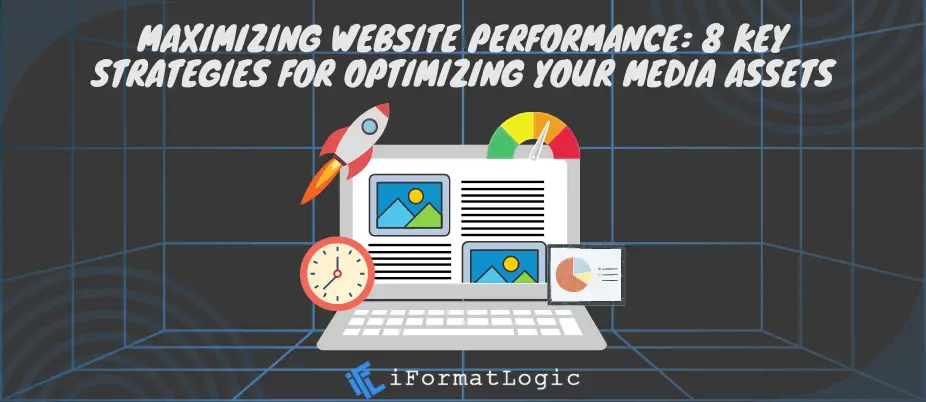Maximizing Website Performance with Advanced CDN Strategies

Content Delivery Networks (CDNs) play a crucial role in enhancing website performance by distributing content closer to users’ locations. By leveraging advanced CDN strategies, organizations can significantly improve website speed, reduce latency, and deliver a seamless user experience.

1. Intelligent Caching and Optimization

- Implement intelligent caching algorithms to proactively cache frequently accessed content at edge servers, reducing server load and improving response times.
- Optimize cache configurations to minimize cache misses and ensure efficient content delivery.
- Utilize caching techniques such as reverse proxies and content compression to reduce data transfer size and further improve page load speeds.
2. Edge Computing and Serverless Functions
- Deploy edge computing capabilities on CDN nodes to process content locally, reducing latency and enabling faster responses.
- Leverage serverless functions integrated with CDNs to handle dynamic content delivery, reducing infrastructure costs and improving scalability.
- Employ serverless functions to perform tasks such as image optimization, video transcoding, and personalized content delivery at the edge.
3. Multi-CDN and Load Balancing
- Utilize multiple CDNs to distribute content across a wider network, increasing reliability and ensuring optimal performance even during peak traffic periods.
- Implement intelligent load balancing mechanisms to distribute traffic across multiple CDN providers based on factors such as location, network quality, and content availability.
- Monitor CDN performance metrics and dynamically adjust load balancing configurations to optimize content delivery.
4. Image and Video Optimization
- Implement image optimization techniques, such as lossless compression, resizing, and lazy loading, to reduce image file sizes and minimize page load times.
- Utilize video delivery strategies, such as adaptive bitrate streaming, to deliver video content in the most optimal format for each user’s device and network conditions.
- Consider using video codecs with lower computational complexity to reduce video processing time and improve playback performance.
5. Geolocation and Content Personalization
- Geolocate users to deliver content from the closest CDN edge nodes, minimizing latency and improving response times.
- Personalize content delivery based on user location, device, and preferences to provide a tailored and engaging user experience.
- Utilize CDN features to enable A/B testing and experimentation, allowing you to optimize content delivery strategies based on user feedback.
6. Monitoring and Analytics
- Implement robust monitoring and analytics tools to track CDN performance metrics, such as latency, response times, and traffic patterns.
- Utilize CDN analytics to identify areas for optimization, troubleshoot issues, and ensure continuous improvement.
- Monitor key performance indicators (KPIs) related to website speed, user experience, and conversions to evaluate the effectiveness of CDN strategies.
By implementing advanced CDN strategies, organizations can significantly enhance website performance, delivering a fast, reliable, and engaging user experience. These strategies optimize content delivery, reduce latency, and improve scalability, ultimately leading to increased user satisfaction and improved business outcomes.## Maximizing Website Performance With Advanced CDN Strategies
Executive Summary
In the fast-paced digital landscape, website performance is paramount to user satisfaction and business success. Content Delivery Networks (CDNs) play a crucial role in optimizing website performance by distributing content globally and reducing latency. This article explores advanced CDN strategies that can significantly enhance website speed, reliability, and user experience.
Introduction
In today’s internet landscape, users expect websites to load quickly and seamlessly, regardless of their location. A slow website can result in increased bounce rates, decreased conversions, and negative user feedback. CDNs address this challenge by caching static content and delivering it from servers closer to the user, significantly reducing load times and improving overall website performance.
FAQs
1. What is a Content Delivery Network (CDN)?
A CDN is a globally distributed network of servers that stores and distributes static content, such as images, videos, and CSS files, to end users from the nearest server location. It improves website performance by reducing latency and bandwidth consumption.
2. Why is CDN important for website performance?
CDNs optimize website performance by:
- Caching static content: Distributing content from multiple locations reduces the load on the origin server and decreases latency.
- Reducing network congestion: By caching content at edge servers, CDNs reduce network traffic and improve bandwidth utilization.
- Optimizing content delivery: CDNs optimize content delivery based on user device, location, and network conditions to ensure fast and reliable loading.
3. What are some of the benefits of using a CDN?
Benefits of using a CDN include:
- Improved website speed and responsiveness
- Increased website availability and reliability
- Reduced bandwidth costs and server load
- Improved search engine optimization (SEO)
- Enhanced user experience and satisfaction
Advanced CDN Strategies
1. Content Optimization
- Image optimization: Resize and compress images to reduce their file size without compromising visual quality.
- CSS and JavaScript minification: Remove unnecessary characters and white space from CSS and JavaScript files to improve loading speed.
- Browser caching: Leverage browser caching mechanisms to store frequently accessed content on the user’s device for faster subsequent loading.
2. Network Optimization
- Global server coverage: Choose a CDN provider with a wide network of servers strategically located across the globe to minimize latency.
- Multi-homing: Connect to multiple upstream providers to ensure network redundancy and reliability in case of outages or congestion.
- DNS optimization: Optimize DNS settings to reduce lookup times and improve content delivery.
3. Security Enhancements
- SSL/TLS encryption: Encrypt content and communications between the CDN and users to protect against data breaches and interceptions.
- DoS mitigation: Implement DDoS protection measures on the CDN to mitigate denial-of-service attacks and ensure website availability.
- Content security policy (CSP): Configure CSP to prevent malicious scripts from executing on the website, reducing the risk of security breaches.
4. Monitoring and Analytics
- Real-time monitoring: Track key performance indicators (KPIs) such as page load times, cache hit rates, and network latency to identify and resolve performance issues.
- Geo-performance analysis: Analyze website performance by географическое местоположение to identify regions where optimization is needed.
- Log analysis: Examine CDN logs to understand user behavior, content usage, and identify potential bottlenecks.
5. Cost Optimization
- Tiered pricing: Choose a CDN provider that offers flexible pricing options based on bandwidth usage, content volume, and geographical coverage.
- Traffic analysis: Monitor traffic patterns and identify areas where CDN optimization can reduce costs without sacrificing performance.
- CDN contract negotiation: Negotiate favorable contracts with CDN providers to secure optimal pricing and service level agreements.
Conclusion
Advanced CDN strategies are essential for website owners and businesses seeking to maximize website performance in the competitive digital landscape. By implementing these strategies, organizations can significantly improve website speed, reliability, and user experience. Whether choosing the right CDN provider, optimizing content delivery, or enhancing network and security measures, a proactive approach to CDN usage ensures that websites load quickly and remain accessible, fostering user engagement and driving business success.
Keyword Tags
- Website Performance
- Content Delivery Networks (CDN)
- CDN Strategies
- Content Optimization
- Network Optimization
